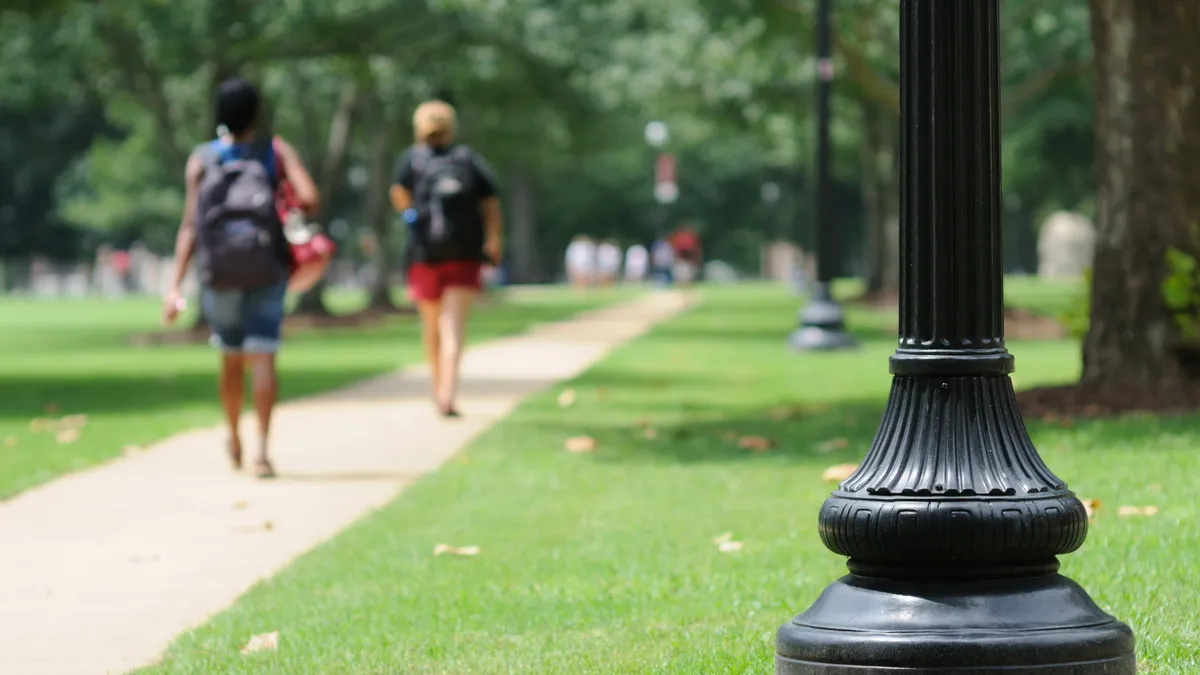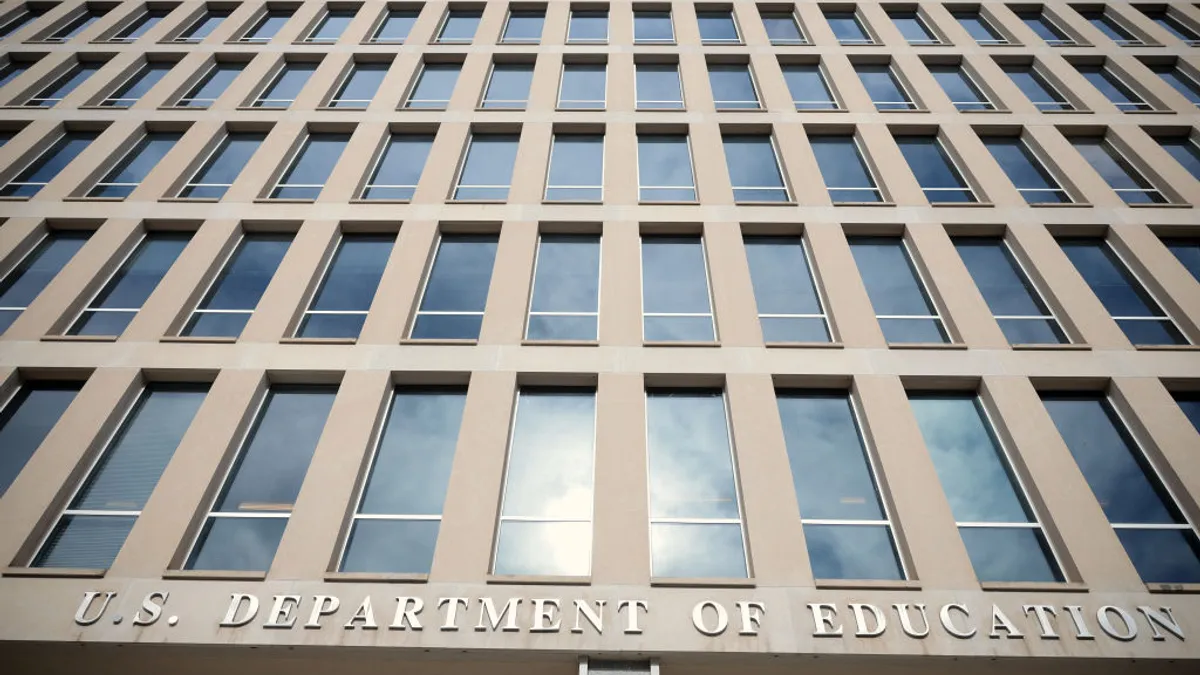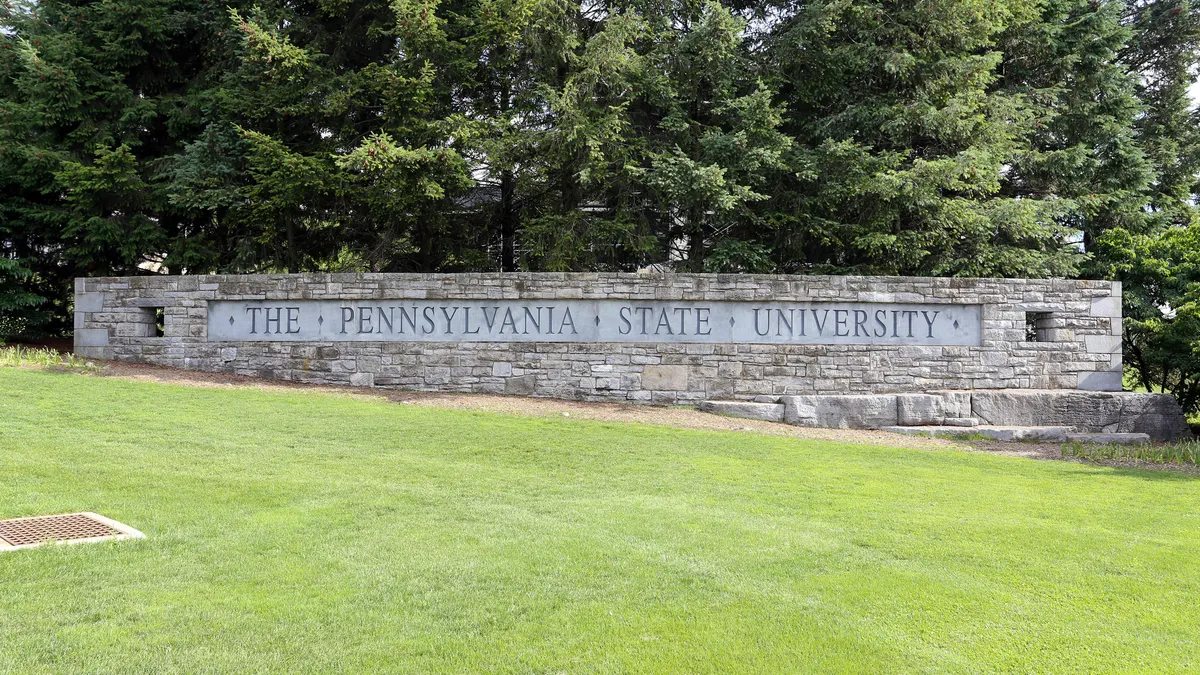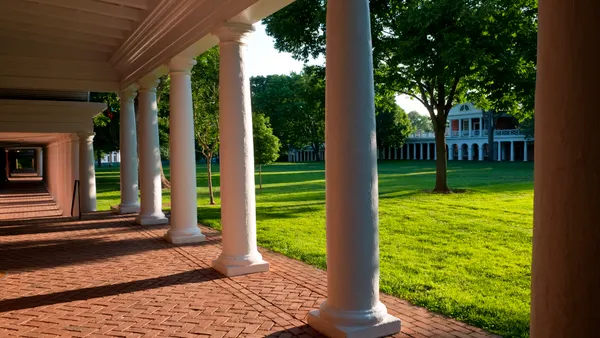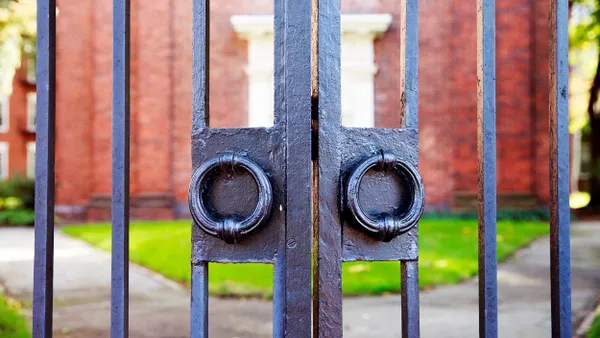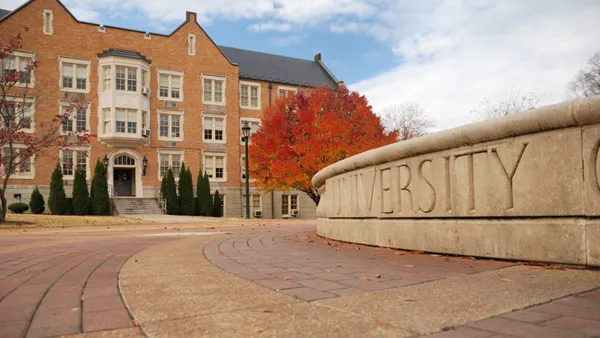Dive Brief:
-
Colleges and universities are beginning to release the results of coronavirus tests done on students and employees upon their return to campus.
-
Some institutions — including the University of Kentucky, the University of Washington and West Virginia University — also have public dashboards showing how many coronavirus cases the tests are turning up.
-
These efforts can encourage colleges to be more transparent, but officials should also explain what the data means and how they're using it to make decisions, experts say.
Dive Insight:
Testing students and employees for the coronavirus before they return to campus is a key plank of many colleges' reopening plans. Iowa State University, for instance, is requiring all of its roughly 9,000 residential students this fall to get tested before they move into their housing, according to a local media report.
So far, 66 tests of around 3,000 have returned positive, equating to a 2.2% positivity rate. Public health officials recommend that governments have positivity rates of 5% or less for at least 14 days before they reopen.
Meanwhile, the University of Kentucky is requiring all students coming onto campus to be tested for the coronavirus before the fall term starts. As of Saturday, 47 out of roughly 7,800 tests have returned positive, equating to a 0.6% positivity rate, according to its dashboard at publication time.
Similarly, data from West Virginia University's coronavirus dashboard shows more than 8,000 tests of Morgantown campus students yielded an 0.8% positivity rate.
Other universities are displaying their results in publicly available dashboards. That includes the University of Washington and Wisconsin's Marquette University, both of which have been tracking such data since March, when colleges began shutting down their campuses because of the pandemic.
These dashboards can encourage transparency, said Felecia Commodore, a higher education professor at Old Dominion University, in Virginia. "In a time like this, where you have a lot of rapid change and a lot of decisions that are being made very quickly, … I think anything that can help foster trust is helpful for an administration," she said.
However, Commodore suggested college leaders should educate the campus community about what the data means in plain language and explain how they're using it to make decisions. Higher education officials sometimes communicate in ways that aren't accessible to "the everyday person," she said, adding that "causes more anxiety."
Not all colleges have the resources needed for widespread testing. Some only plan to test students who have symptoms of COVID-19, the illness the virus causes, or those who have been in close contact with someone with a confirmed case.
In some circumstances, universities are backing up these decisions by citing guidance released in June from the Centers for Disease Control and Prevention (CDC), which does not recommend that colleges test asymptomatic students and employees for the coronavirus before they return to campus because it hasn't been "systematically studied."
Some experts disagree with the CDC. A. David Paltiel, a health policy professor at Yale University, in Connecticut, called the guidance outdated. "It's baffling to me that the CDC has failed to update that guidance in light of the accumulating evidence that the so-called silent spreaders, the people with asymptomatic or presymptomatic infection, are fueling outbreaks," he said.
Paltiel is the lead author of a recent study published in the Journal of the American Medical Association that suggests colleges may need to test students for the coronavirus every two days and have them adhere to social distancing in order to control campus outbreaks.
He acknowledged that the "cost and logistics" of widespread testing are out of reach for many colleges. "But just because it's not feasible doesn't mean it isn't important," Paltiel added.



